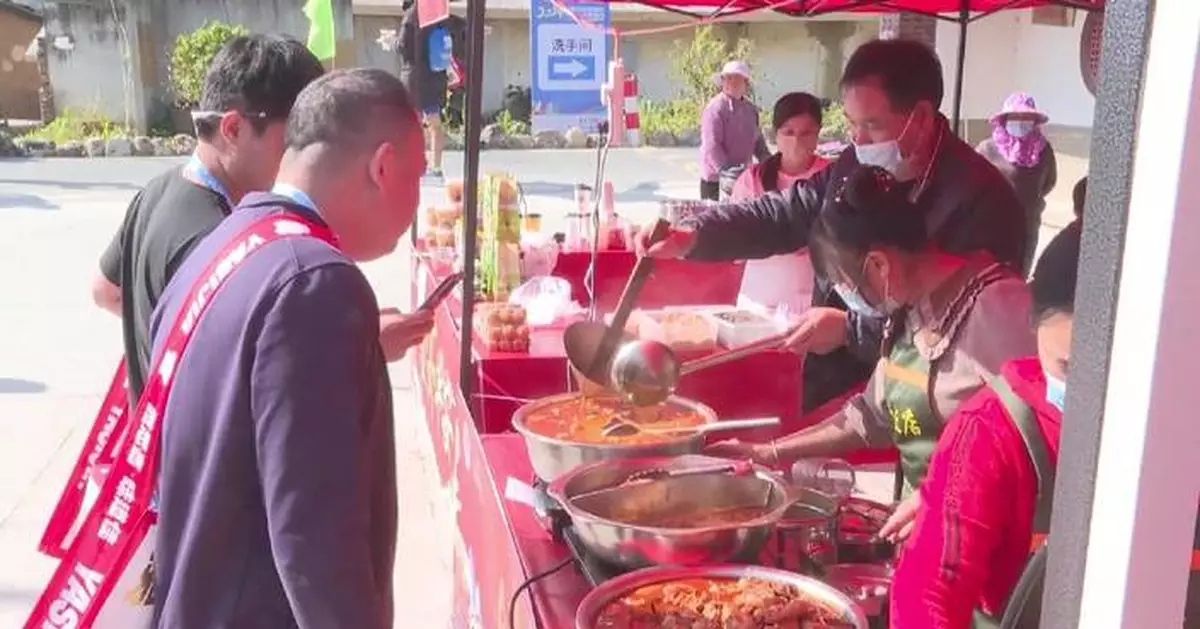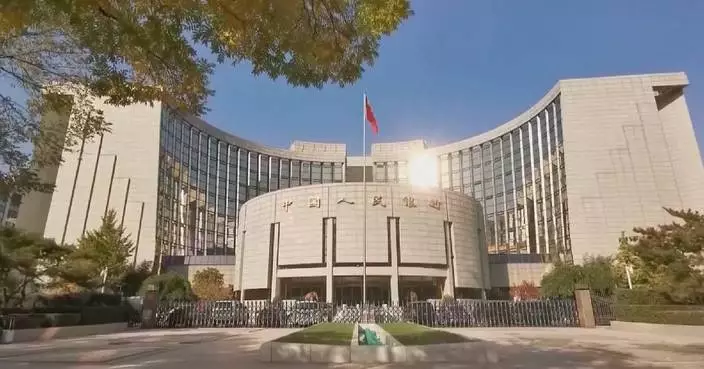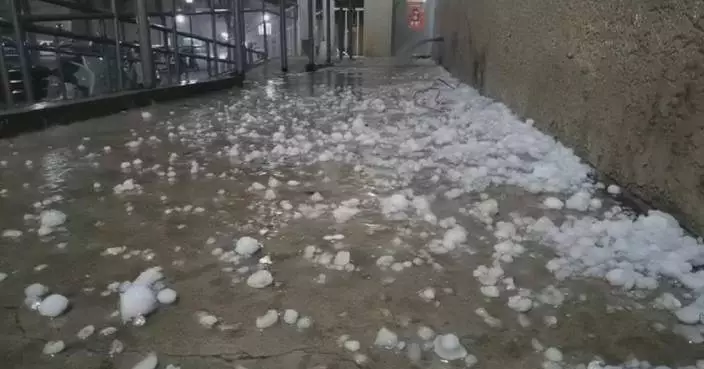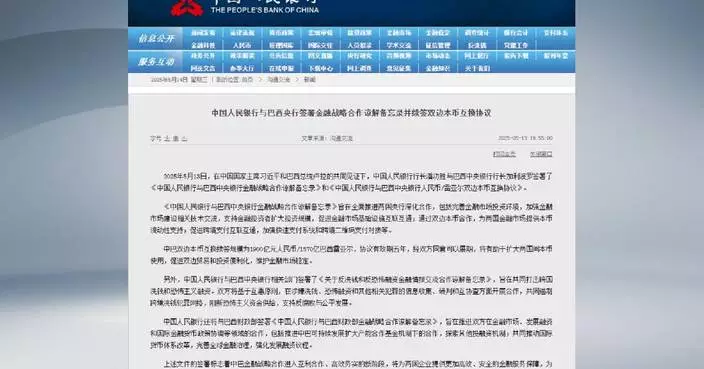Various fun activities have been launched in parts of east China's Zhejiang and Fujian Provinces in the run-up to the Spring Festival holiday season.
At the Wen'er food bazaar in Hangzhou City of Zhejiang, a distinctive exhibition showcasing paper-cutting, an intangible cultural heritage, draw a large crowd. In addition to shopping for groceries, visitors could also join in paper-cutting classes, drink coffee, and watch exhibitions.
"Today, I made a paper-cut and a paper-carving artwork, featuring the 'Fu' character, to bring good fortune to my home," said Ge Yingyin, a young girl.
Apart from such lively interactions among locals, an exhibition at the market displays over 50 classic fine-grained paper-cutting artworks, which offers the visitors an opportunity to appreciate the charm of intangible cultural heritage up close.
"The market here is full of life, [where intangible cultural heritage items can find their niche]. China's intangible cultural heritage is never divorced from life, but more integrated into the daily life of ordinary people," said Wan Qianyun, a local resident.
Hua'an in Zhangzhou City of Fujian, once a small fishing village, has now transformed into a popular tourist destination. With its rich fishing resources, the county has developed festive activities such as fish banquets and tours to its traditional earthen buildings, attracting flocks of tourists.
As the Spring Festival approaches, Hua'an has also organized events such as a New Year market, a half-marathon and a spinning top competition, all aimed at boosting its tourism industry by leveraging its distinctive culture and agricultural products.
"The Jiulong River is abundant in aquatic products, and many tourists come here to savor those delicacies. Guanshe has 127 guesthouses with a total of 224 beds, and 60 percent of them are pre-booked for the Spring Festival holiday," said Lan Gengyuan, an official of the Guanshe Village of Hua'an.
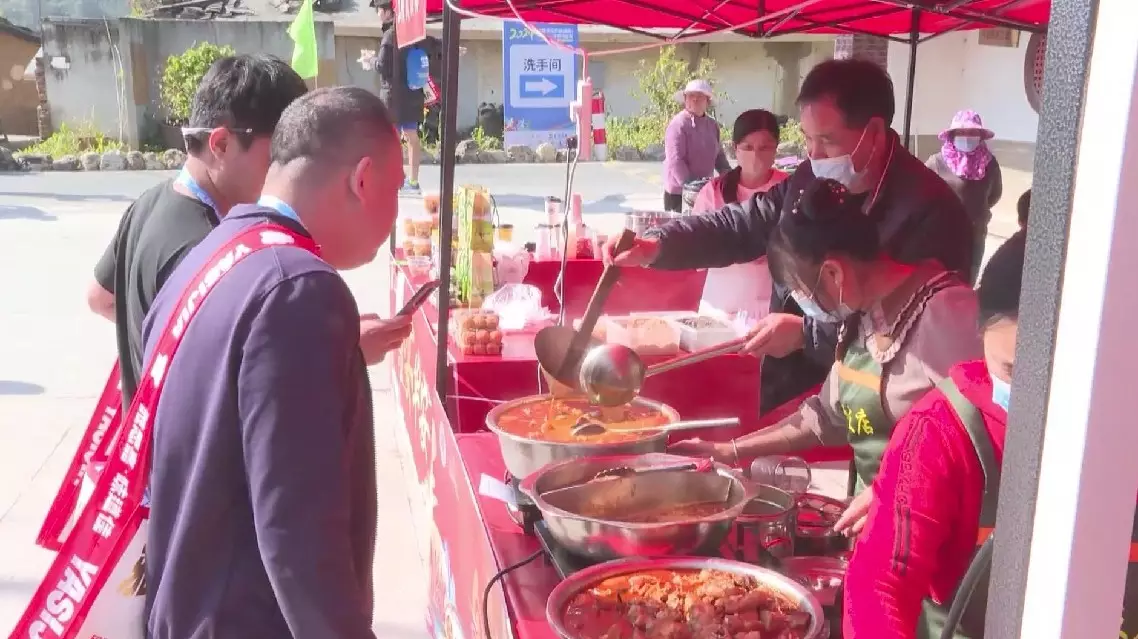
Zhejiang, Fujian launch cultural activities in run-up to Spring Festival
Regions across China are leveraging drones and advanced farm machinery to manage grain production.
There are three different grain production seasons in China: summer grain, early rice and autumn grain, accounting for about 21 percent, 4 percent and 75 percent of the annual grain output respectively.
Traditionally, the summer harvest spans from May to late June in China every year, with most of the work focusing on reaping winter wheat, a staple grain crop, and rapeseed.
The winter wheat planted in more than 250,000 mu (16,667 hectares) of fields in Pinglu County, Yuncheng City of north China's Shanxi Province is now entering the ripening period which is crucial for the grain formation.
Located in a mountainous region, the county has scattered plots which poses challenges to manual pest and disease control. Facing the challenge, the county's agricultural department has designated the scattered plots as specific areas for drone spraying, combining human efforts with drone technology to ensure that no part of the field is left untreated.
The local authorities have deployed drones to cover over 30,000 mu (2,000 hectares) of crop fields per day. Flying over the fields, the drones are spraying pesticides and fertilizer to ensure the health and productivity of wheat crops and a bountiful summer grain harvest.
As the summer grain harvest draws near, major agricultural provinces, including Sichuan in southwest China, Hubei in central China, and Jiangxi in east China, have already begun harvesting rapeseeds.
In Zitong County, Mianyang City, Sichuan Province, rapeseed farmers are reaping a bountiful harvest. In a local agricultural park, six combine harvesters can be seen shuttling across the fields, with their gears whirring as rapeseed stalks being fed into the machines.
The entire process, from harvesting to threshing, separating, and crushing, is fully automated. The crushed rapeseed shells and straw are evenly spread across the fields, while the harvested seeds are transported to drying facilities before being sold or processed into oil for consumption.
This year, Zitong County has deployed over 1,200 harvesters to assist local farmers, with the mechanization rate in harvesting exceeding 80 percent, leading to a 30 percent reduction in harvesting costs. The full harvest is expected to be completed by the end of this month.
Meanwhile, in Jingmen City, Hubei Province, the introduction of two-stage rapeseed harvesting technology has substantially improved grain yields. The new technique involves cutting down the rapeseed, leaving it to dry on the field for a few days before using machines to gather and thresh the seeds.
This innovation has reduced the seed loss rate from 30 percent to less than 8 percent. By now, 758,000 mu (50,533 hectares) of the city's 2.32 million mu (154,667 hectares) of winter rapeseed have been harvested, accounting for more than 30 percent of the crop to be harvested. The harvest is expected to be completed by May 21.
In Linchuan District of Fuzhou City in Jiangxi Province, the rapeseed harvest is nearing its end. Local farmers are racing to take advantage of the favorable weather conditions, using advanced machinery to ensure a smooth and efficient harvest.
The area under rapeseed cultivation in the Linchuan District alone surpasses 100,000 mu (6,667 hectares). More than 2,800 farming households have begun harvesting since late April, with the mechanical harvesting rate exceeding 90 percent.
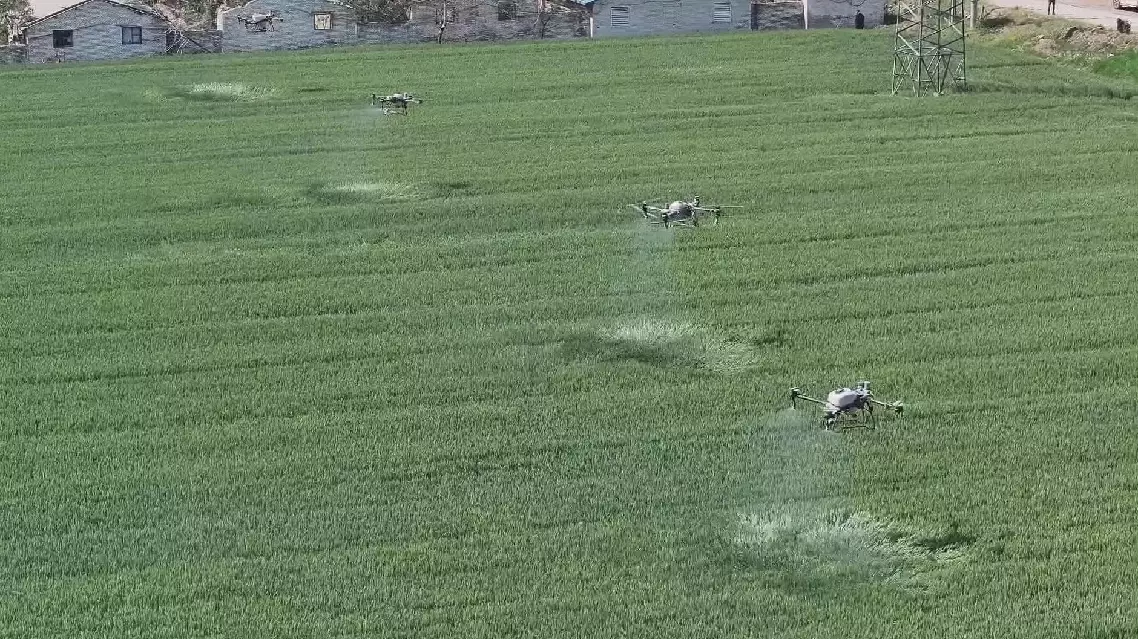
Chinese farms use drones, advanced farm machinery to manage grain production



